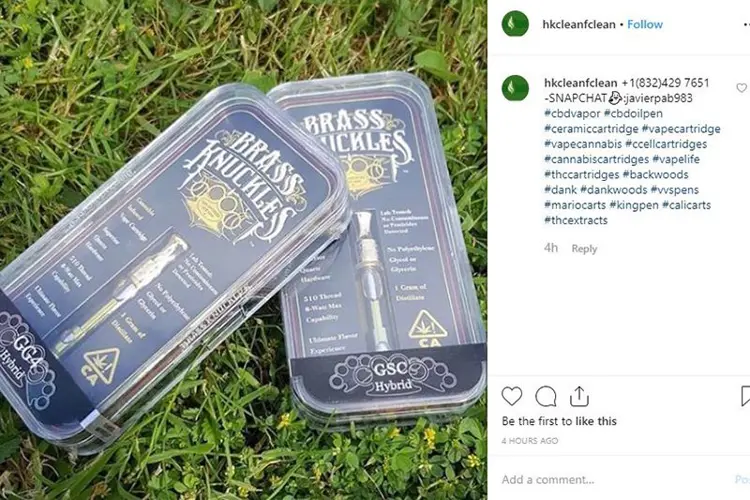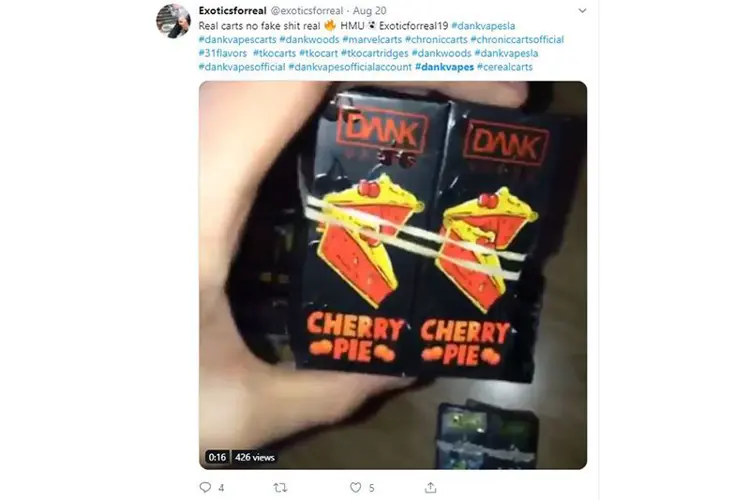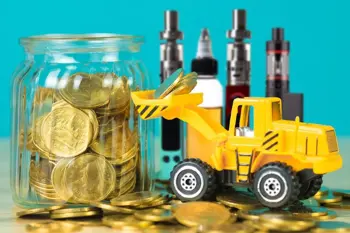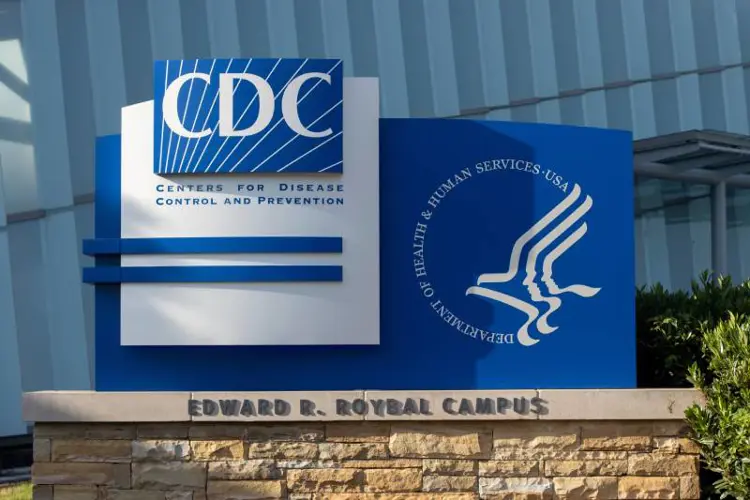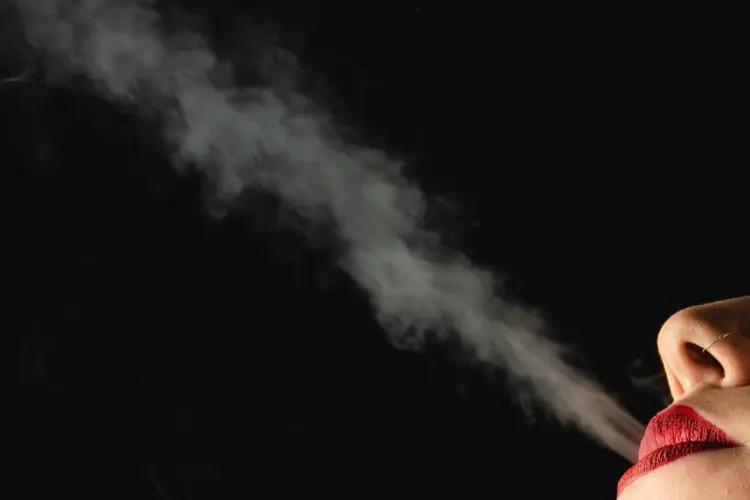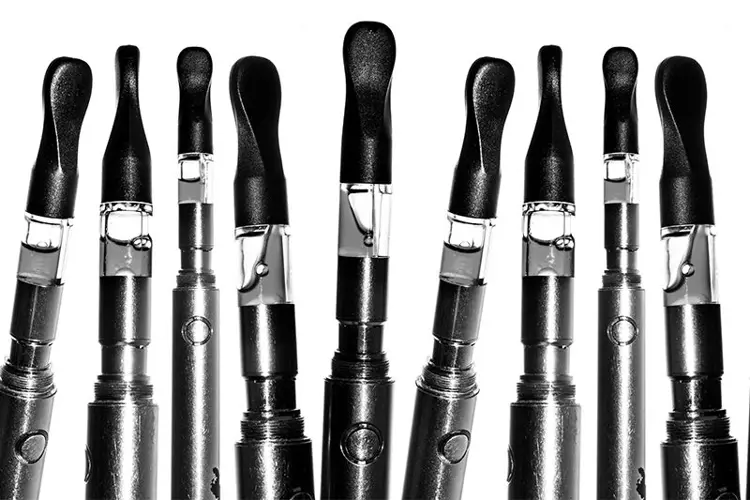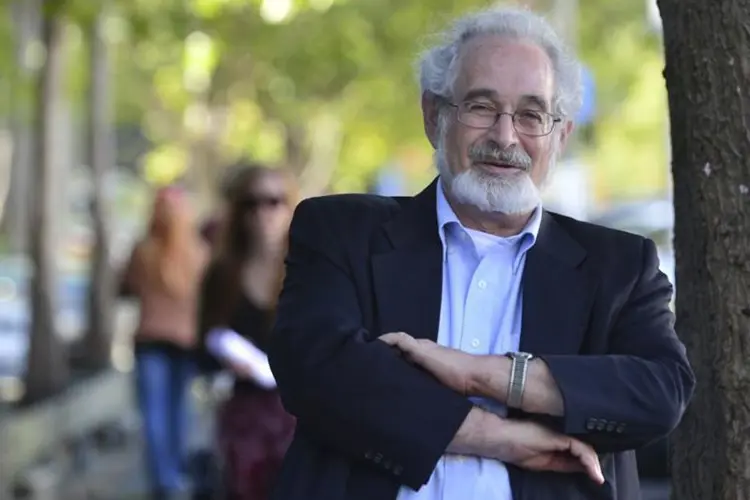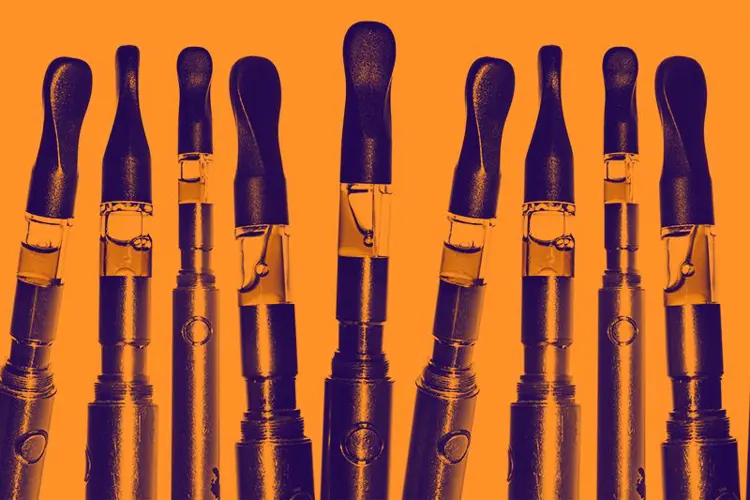The epidemic of lung disease connected to vaping has grown rapidly, and until public health officials start treating it as a public health issue, and not a weapon to bludgeon the legal vaping industry, the situation isn’t likely to improve.
When we first reported on the issue less than three weeks ago, the outbreak was limited to fewer than two dozen cases in Wisconsin and Illinois. Last Friday, the Centers for Disease Control and Prevention (CDC) reported that it was investigating 193 suspected cases in at least 22 states.
One person in Illinois has died.
What all the patients have in common is “vaping.” Unfortunately, that term covers so much territory—and is so poorly understood by doctors and public health officials—that no one has been able to tease out what is the actual harmful product being inhaled. And after years of propaganda from government officials and anti-smoking groups, a lot of medical professionals find it easy to believe that commercial nicotine vaping products are the cause.
It seems unlikely at this point that the cases were mostly caused by the synthetic cannabinoid products often called Spice or K2, as our first article suggested. Spice may yet turn out to be part of the problem, but many reports are implicating black market cannabis extracts sold in prefilled cartridges, and not synthetic cannabis products.
But while some state public health departments are responding as they should—notifying the public of the likely source, and describing what doctors should be looking for—the federal agencies that are responsible for handling such outbreaks are using the situation to further confuse the public about vaping, e-liquid, and cannabis products. The misdirection appears, in some cases, to be deliberate.
Coverage of the epidemic in the mainstream press is beginning to improve, as reporters begin to look for the real answers on their own, instead of trusting the gospel of federal public health authorities. Still, it has been the cannabis press—Merry Jane, Leafly, and Marijuana Times—that has done the best reporting on the outbreak, along with some California newspapers and radio stations.
Real answers are coming very slowly, but despite incompetence and a lack of honest information from federal authorities, a broad picture is beginning to emerge of what is probably happening. Unfortunately, many specific details remain missing.
What is the condition and what’s causing it?
Patients typically present with flu- or pneumonia-like symptoms, but there is no underlying bacterial or viral infection. In many of the early cases, they were sent home with antibiotics or antivirals, but they never improved (because there was no infection to be treated with those drugs). It seems to be more an injury than a disease.
The patients are variously described as having Acute Respiratory Distress Syndrome (ARDS) or Severe Acute Respiratory Distress Syndrome (SARDS), severe acute pulmonary disease, progressive respiratory compromise, or other variations on that theme. In one state, New Mexico, officials are unfortunately calling it “vaping-associated lung disease.”
The early symptoms are similar in most cases: difficulty breathing, shortness of breath, fatigue, dizziness, chest pain, and cough. Some have a fever, and some have gastrointestinal problems, including vomiting and diarrhea.
The disease progresses, and some patients have to have tubes inserted in their trachea to help them breathe. Doctors in New York State told CBS that the “illnesses resemble an inhalation injury, with the body apparently reacting to a caustic substance that someone breathed in.”
Questioning the patients, doctors discovered a common factor: vaping. Because the patients all vaped, it was assumed that something they had inhaled caused a reaction in their lungs. But epidemiologists and doctors aren’t sure what.
In many cases, the patients have vaped more than one thing, which has confused the situation. Epidemiologists are supposed to search for the common factor among the patients; they try to separate the signal from the noise. When there are multiple common factors, it’s hard to zero in on the exact problem, especially after the fact.
“We’re seeing this associated with marijuana oil, definitely, in every case,” pulmonologist Dixie Harris told the Salt Lake Tribune. “Many of the patients are also doing e-cigarettes." Dr. Harris was able to separate the likely cause from the distraction, but many haven’t. Part of the problem may be that some patients are reluctant to admit using illegal products—especially minors and young adults who live with their parents.
“One eighteen-year-old boy, who almost died, had nodules (small masses) all over his lungs,” Dr. Melodi Pirzada, a pulmonologist at New York University Langone Hospital, told Marijuana Times. “We did a million-dollar workup and couldn’t figure out what caused it. He denied vaping until the family found a cartridge in his bedroom. It had cannabis oil in it. We then learned that his symptoms began around the time he started using it.”
Another confusion-causing problem: a lot of public health officials are too quick to believe the worst about (nicotine) vaping, and may not understand that vaping isn’t one thing. Vapers and cannabis users know that commercial e-cigarette products are not the same thing as black market THC oil cartridges, but many people—including public health officials—have no clue.
“We strongly urge people to avoid vaping products and e-cigarettes,” Wisconsin Department of Health Services Secretary-designee Andrea Palm said in an Aug. 2 press release. That alert contained nothing about cannabis oil-based vapes. The Wisconsin DHS reduced the issue to “e-cigarettes,” and that largely defined the early narrative in national stories too.
But doctors and reporters in California were more savvy. In that state, whose “emerald triangle” of northern counties has been the epicenter of the American cannabis industry since the 1960s, there is much more awareness of the potential problems that can occur in an illegal market.
Black market cannabis concentrates
When California legalized recreational marijuana in 2018, legal sales (which had been strictly medical until then) actually declined. That’s because the state instituted strict regulations for the production, processing, distribution and sale of cannabis and cannabis products like edibles and concentrates. Everything must go through an expensive testing regime. The state also piled taxes onto the cost of legal pot. Further, 80 percent of California municipalities chose not to allow recreational sales. The upshot of the regulation is that most traditional small growers haven’t even attempted to obtain a license from the state.
As a result of these factors, legal California still has a huge illegal cannabis market. According to the New York Times, only 20 percent of the cannabis grown in California is legally sold and consumed there. That means more than 11 million pounds of cannabis finds its way to the illegal market, often in the form of so-called THC oil or hash oil (there are many related extracts, which are also called concentrates), which can be bottled for bulk sale or pre-loaded into vape cartridges. For purposes of shipping out of state, oil products take up less space and don’t have the telltale odor of cannabis flower. And illegal growers usually don’t test their weed.
A June 6 Marijuana Times article described a police raid in Mendocino County, California, during which the Mendocino Sheriff’s Department confiscated thousands of black market vape cartridges filled with hash oil. The carts were filled by an illegal cannabis processing operation, and packaged in what looked like legitimate packaging that any licensed product might have. The cartridges could have been sold to dealers anywhere in the country.
“My guys came to me and showed me these fancy-looking packages listing the contents – how much THC, CBD, and so on,” Mendocino County Sheriff Thomas Allman told reporter Foster Winans. “They told me, ‘We don’t believe it.’”
Allman took some of the carts to a local lab and asked them to run the same tests that would be required of concentrates sold in the legal market. The carts contained various insecticides and fungicides at high levels, including myclobutanil, a fungicide that is considered safe when used on edible crops like grapes. But when myclobutanil is heated, it releases toxins, including hydrogen cyanide.
The fungus killer is illegal to use on tobacco crops for that very reason. “Hydrogen cyanide (AC) is a systemic chemical asphyxiant,” says the National Institute for Occupational Safety and Health (NIOSH, a CDC agency). “It interferes with the normal use of oxygen by nearly every organ of the body.”
Hydrogen cyanide “was a major component of Zyklon-B, the gas used in Nazi gas chambers,” writes Inverse reporter Emma Betuel. A cannabis testing lab in California told Betuel that myclobutanil is “definitely one that we see frequently in the underground market.”
The oil in the confiscated cartridges had more than 7,000 times more myclobutanil than the state allows. Luckily those carts were caught. But how many others were shipped around the country? And how many other illegal processors are filling cartridges with contaminated hash oil? The answer seems to be: a lot.
Almost anything might be in unregulated cannabis carts. According to Leafly reporter David Downs, California public health officials “have reported many cases of poisonings from adulterated CBD vape carts and CBD oils bought online or at truck stops. Labs have found cough syrup and dangerous synthetic cannabinoids in the unregulated mixtures.”
“Black market cannabis was a relatively safe product for so long,” Josh Wurzer, founder of a licensed cannabis lab in California, told Leafly, “because—outside of illegal pesticide use—it is hard or impractical to adulterate it to the point it’s going to lead to a public health issue.
“However with these vape cartridges, it doesn’t have to be nefarious, it can just be incompetence,” he added. “You need to be very careful about the purity of the cannabinoids, terpenes, and any additives you use, but you need to monitor the quality of the materials used to manufacture the cartridges themselves.”
There are different ways of producing hash oil, which is the thick liquid version of cannabis extracts like hashish (hash), wax, shatter or budder. It’s made by removing the oil glands (called trichomes) from the cannabis flower (the buds) and pressing or processing them until they reach various consistencies. Since all of the active substances in the plant—like THC, CBD, and a variety of lesser-known cannabinoids—are in the trichomes, the resulting extract is far more powerful than the plant itself.
One way of stripping the oil glands from the flower is to load the plant material in a pressurized and heated canister with a solvent like butane or propane, then draw off the liquid and separate the remaining butane from the concentrated trichomes. This is called butane hash oil (BHO). There are some risks to this method. First, these operations sometimes cause explosions that kill the lab (or kitchen) workers. But also, illegal processors trying to save money may not remove the solvent from the oil properly. Depending on how much remains, inhaling it may be a health hazard.
Sometimes when that oil reaches the dealers who sell it, they cut it with other oils, like MCT (medium-chain triglycerides), or with VG, to allow more carts to be filled (and sold). It’s unknown whether MCT oil is safe for vaping. It’s possible that any inhaled oil can block the airways of the lung, causing a condition known as lipoid pneumonia. The oils may also be mixed with aromatic terpenes as a cutting agent or to add flavor, but they’re often not actual cannabis terpenes. Unscrupulous dealers might even dilute the wholesale product so much that they choose to add dangerous synthetic cannabinoids to make it stronger.
Every one of these steps creates opportunities for dangerous contaminants to find their way into the oil, whether deliberately or by accident. And the cheaper the oil and the further it travels from the legal market, the more likely it is to have been processed or packaged carelessly. But even in legal states like California, there is a huge market for illegal extracts like hash oil. It’s simple economics.
“As the current outbreak demonstrates,” writes Michelle Minton, senior fellow at the Competitive Enterprise Institute, “when the legal market fails to supply people with the products they want at the prices they want, illegal purveyors are always happy to step in. We have seen this before with alcohol, drugs, and now with vaporized marijuana.”
Counterfeit packaging and fake companies
The carts are often sold in boxes that look legitimate. Sometimes they’re counterfeit packages of actual legal products, like King Pen or Brass Knuckles, that are popular in legal states. Sometimes the packages display “brands” that don’t actually exist, like Dank Vapes.
Counterfeit packaging is a major problem for legal manufacturers in the extraction business. Legitimate companies are forced to take steps like using holograms and serial numbers to assure customers they’re getting the real thing. But the real carts are only sold in legal dispensaries.
One major California manufacturer, King Pen, told Merry Jane that it’s “not currently possible to tell the difference between authentic and fake King Pen cartridges without testing the contents of the oil itself.” The carts themselves are very similar to nicotine vaping cartomizers; they’re glass tanks with an enclosed atomizer, which is constructed slightly differently to handle the thick oil. They’re made in China, probably in the same factories that make e-liquid vape products.
If you’re buying a prefilled weed vape anywhere but a licensed dispensary, it’s almost certainly not legitimate—even in legal states. Remember, as much as two-thirds of the pot in California isn’t coming from licensed producers or processors. And for some customers—especially those under 21, or buyers without the cash to afford the high taxes added to the cost of legal weed—black market cartridges may be a conscious, money-saving choice.
For buyers in prohibition states, it can be especially confusing. They may be told that the carts were bought in legal dispensaries in a legal state and transported across the country. But that would make them prohibitively expensive. No one is selling weed at a loss. In illegal states—like most of the states hit by the current outbreak—all of the prefilled oil carts are fakes.
It’s easy to buy the packaging from Chinese companies that produce near-identical copies of the real boxes. The carts themselves are easy to replicate, as also happens with nicotine products. Extraction companies that care about their customers use ceramic carts that don’t have any metal parts soaking in the distillate. Those looking to cut costs may use poorly made copies that leach lead from solder connections into the oil.
“For the most part,” wrote Merry Jane’s Zach Harris, “the bootleg carts are sold empty, giving black market dealers around the world the opportunity to fill the ‘branded’ carts with whatever they can get their hands on, disguising potentially pesticide-ridden distillate, heavily-cut oils, synthetic cannabis, or any number of chemical concoctions.”
If the carts aren’t going into counterfeit boxes that mimic the designs of legitimate manufacturers, they're probably being sold in a box with a fake brand like Dank Vapes. A lot of buyers in prohibition states believe Dank Vapes is an actual producer and seller of extractions. But Dank Vapes is nothing but packaging. There is no actual manufacturer with that name. You can buy Dank Vapes boxes from Chinese sites like Ali Baba that also sell the counterfeit packages discussed above. Or you can buy them from Amazon. Wherever you buy it, it’s not a real brand.
It was a Dank Vapes cart the man in Burlington, Wisconsin vaped before going to the emergency room where he was intubated and put into an induced coma.
“They act like a cannabis company, but they actually don’t exist,” Mark Hoashi told Inverse. “They’re in the packaging industry.” Hoashi runs a cannabis mobile app called Doja. “These are just people filling cartridges as ‘Dank Vapes.’ It’s not a singular facility. It’s just people in their garages filling them and selling them.”
Nowadays, a lot of those people are selling their bootleg carts through Craig’s List, or advertising on Instagram, Snapchat and Twitter. The boxes are covered with garish designs, using bold colors and sporting cannabis strain names that are purely decoration. It’s unlikely any of the dealers that sell carts in Dank Vapes packaging are selling the strains named on the boxes, or even know what strains they’re selling. But typical Dank Vapes customers may not know any better.
“It’s really popular with high school kids,” Hoashi told Inverse. “It’s unfortunate, but the high schools are flooded with the illicit stuff. It’s just the reality, that kids smoke weed, and these cartridges are just a popular way to smoke weed these days.”
The epidemic and the response
So far, federal public health officials have refused to issue a bulletin warning Americans to avoid black market THC oil products. The maddening tendency of authorities—including those in the FDA and especially the CDC—to refer to every vaporized product as an e-cigarette, and to the practice of using it as vaping, has caused massive public confusion. As we’ll see, that confusion seems to be deliberate on the part of some federal officials.
The first publicized cases were in Wisconsin, although it now seems likely that there were similar cases in California around the same time. It’s difficult to create a timeline, because some patients were apparently ill long before health officials were notified. The midwestern outbreak spread from Wisconsin to nearby states like Illinois and Minnesota. From there, it jumped around the map. As of Aug. 23, the CDC says confirmed or suspected cases are being investigated in 22 states.
Kings County, California issued an alert on Aug. 12, describing seven confirmed cases dating back to June, and noting that a “reported common exposure among these patients is that they have been vaping cannabis or CBD oils.”
The next day, CBS News ran a story using the opinions of one supposed expert, Dr. Diana Zuckerman, president of the National Center for Health Research. Zuckerman, whose bio says she has “served in leadership positions at numerous nonprofit organizations,” took direct aim at the wrong thing.
"It's mind-boggling," Zuckerman told CBS. "The vast majority of people who smoke started as children or as young teens, and yet you don't hear about people getting lung cancer until their 40s, 50s, 60s. Think about that compared to what's happening to these kids now. I've never heard of a smoker ending up in the hospital in their teens."
Zuckerman tied the epidemic of lung injuries to the case of Chance Ammirata, the young Florida man who has blamed his collapsed lung on vaping the JUUL. There is no evidence that Ammirata’s problem was caused by vaping, let alone part of the current epidemic.
This is just one of many examples of ignorant “experts” taking advantage of the epidemic to pursue their hatred of nicotine vaping. Meanwhile, the real problem continued. Whether intentional or not, Zuckerman and others dedicated to “protecting kids from vaping” helped misdirect the media.
On Aug. 16, Pennsylvania issued an alert, noting, “In most cases, patients have reported vaping THC containing products though the remaining chemical constituents of the products have not been identified in most cases.” Despite the information coming from California and Pennsylvania, the CDC issued a public alert on Aug. 17, and shockingly continued to emphasize “e-cigarettes” as the probable vector of the outbreak:
On Aug. 19, both Utah and Indiana issued alerts that pointed toward black market THC products as the source of the problems. The lung injuries are probably "not directly correlated to the vaping itself opposed to what these individuals are vaping,” said Dr. Marc Estes of Indiana University Health Arnett Hospital.
On Aug. 21, New Mexico issued an alert supporting the hypothesis that black market cannabis products were to blame. “In light of this disease, we discourage vaping of any cartridges with THC,” said Kathy Kunkel from the state Department of Health. “People who have trouble breathing or experience chest pain after vaping—in the weeks or months prior to the development of these symptoms—should seek immediate medical attention.”
That same day, San Francisco public radio station KQED and the San Francisco Chronicle ran similar stories describing the health risks posed by the illegal California cannabis market. KQED quoted Kings County public health officer Dr. Milton Teske, who had issued the alert on Aug. 12. "The only connecting factor that tied them all together was a history of vaping THC or CBD or some combination of that," Teske said.
Despite the mounting evidence, the CDC issued another bulletin, also on Aug. 21, that downplayed the possibility that cannabis oil was the culprit. “In many cases,” said the agency, “patients have acknowledged recent use of tetrahydrocannabinol (THC)-containing products while speaking to healthcare personnel or in follow-up interviews by health department staff; however, no specific product has been identified in all cases, nor has any product been conclusively linked to illnesses.”
Also on the 21st, the New York Times ran a story quoting CDC deputy director Brian King of the agency’s Office on Smoking and Health. “E-cigarettes are still fairly new, and scientists are still learning about their long-term health effects,” said King. “Adverse respiratory effects associated with e-cigarette use could be the result of a variety of factors, including intended and unintended constituents of these products.”
King told the Times that “e-cigarette aerosol” contains numerous ingredients that could harm the lungs, including ultrafine particles, heavy metals, volatile organic compounds and “cancer-causing agents.” Two days later, the CDC updated the bulletin, upping the number of potential cases to 193. And the agency repeated the words “e-cigarette” or “vaping” four times in the update.
The pattern is clear: reporters from cannabis publications and California news outlets grasp the issue immediately, but national news reporters and federal officials are hamstrung by their preconceptions. And in the case of the CDC, officials like Brian King have used the outbreak as a hook to repeat the same list of mights and maybes they’ve been using for almost a decade to demonize nicotine and vaping. They know better, but they do it anyway.
And it gets worse.
On Aug. 23, an Illinois resident, an adult, died from his lung injuries—the first death in the epidemic. Late that day, the CDC and FDA held a joint conference call for reporters. This should have been the time to be straightforward and tell, as best they could, what was causing this epidemic, or at least to specifically warn the public away from products they know are responsible for some of the cases.
Instead, Brian King of the CDC and FDA’s Mitch Zeller displayed incredible arrogance and incompetence, admitting they knew little about what caused the lung injuries. However, King was certainly more than willing to speculate that it was probably nicotine vaping.
(The following quotes are from the official transcript of the phone call, and have been edited for spelling and punctuation as much as possible.)
“We have received some product samples, and we’re analyzing those samples to see whether they contain nicotine, substances such as THC, or other chemicals or ingredients,” said Zeller, the director of the FDA Center for Tobacco Products. “The results of the testing will be shared with states to aid in their ongoing investigation. FDA is also working to investigate the brand and type of vaping products and devices and whether any of them are products that would fall within FDA’s regulatory authority, as well as where they were obtained.
“We don’t have any information to share at this time, however the agency will continue to communicate with the public about this issue. Let me close by saying as we work to protect the public health, FDA encourages the public to submit as detailed reports as possible of any tobacco or e-cigarette product or health issues to our online reporting portal...”
A reporter asked why there is a sudden upsurge in lung injuries, since vaping has been around for “the better part of a decade.”
“We do know that e-cigarettes do not emit a harmless aerosol,” said King, as though reading from a CDC fact sheet for concerned parents. “They can include a variety of potential harmful ingredients, including ingredients that are harmful in terms of pulmonary illness. That said, it’s possible that the reported cases could have been occurring before this investigation was even initiated, in an event that we weren’t necessarily capturing them.
“But now there’s increased diligence in terms of the current investigation that we’re better able to capture those,” he continued. “That being said, the available science does suggest that the constituents in the aerosol could be problematic. We know there’s a variety of intended and unintended constituents in these products so as we continue with the investigation it’s important to keep all options open and identify a variety of ingredients. At present we haven’t isolated a specific source but we know there’s a variety of constituents in e-cigarette aerosol that could be problematic in terms of illness.”
A reporter, apparently stunned, asked King, “If I heard you correctly, what you’re saying is, it’s possible this could have been happening all along but we’re just now hearing about it, just now capturing it, it’s possible in the ten years since vaping has become a big thing that it may have been happening and you didn’t know about it? I just wanted to know if you could reiterate that to make sure I understand it correctly.”
“Yes,” King replied. “So there’s a variety of harmful ingredients identified, including things like ultrafine particulates, heavy metals like lead, and cancer causing chemicals. And flavoring used in e-cigarettes to give it a buttery flavor, diacetyl, and it’s been related to severe respiratory illness. That being said we haven’t specifically linked any of those specific ingredients to the current cases but we know that e-cigarette aerosol is not harmless.
“In some cases these could have occurred but now we’re monitoring in such a fashion that we are picking them up. But we have to continue with the investigation to determine if they are intended or unintended in these particular cases. We note that a variety of individuals use a number of substances, including THC, particularly young adults so we continue to investigate that as well. But the bottom line is there’s a variety of things in e-cigarette aerosol that could have implications for lung health. A review recently identified a number of adverse health effects associated with e-cigarette use. It’s possible some of these cases were already occurring but we were not picking them up but we continue to investigate.”
Another reporter asked if the speakers could “say anything more on the concerns of THC vaping as well as nicotine and if the patients in Illinois have done both or one or the other, just again any more distinction from you experts is helpful.” Mitch Zeller pretty much admitted that his agency has no idea, and is just beginning to look at the cases. Asked if the FDA is testing for pesticide residue in the products, he said, “The specific question of pesticides we will have to get back to you on. I don’t know if those are being tested for in our laboratories or not.”
For once, reporters covering the CDC and FDA seemed incredulous, pushing back at the idea that no one seems to know anything yet, and forcing King to repeat his hare-brained theory that perhaps this has been happening for a decade and they’re just noticing it.
King actually suggests that ultrafine particles or diacetyl might be responsible, but has no explanation why the disease (which apparently may be the popcorn lung he’s been hoping for) would suddenly appear in mostly young people who’ve only been vaping for a short time, and not in the vapers who’ve been doing it the longest. The vapor from e-cigs isn’t “a harmless aerosol,” says King, apparently trying to include every cliche he’s ever written in a CDC bulletin or press release.
If Brian King's mandate is to protect public health, he clearly should lose his job. But he won’t, because his view is unfortunately the predominant one at his agency.
“Unfortunately," wrote Dr. Michael Siegel of the Boston University School of Public Health, “there is such an anti-vaping prejudice—and a growing bias against the use of e-cigarettes for smoking cessation—that many are hoping to be able to attribute these cases to traditional nicotine vaping. Since there has been no specific admonition to avoid THC oils, and no real effort to distinguish between nicotine e-cigarette liquids and other chemicals, kids are not going to understand the immense difference in danger. This is a failure of the CDC—and one that puts lives at risk.”
How about another black market?
Anti-vaping activists are using the public confusion over the source of the lung injury outbreak to press their advantage and create further fear and uncertainty over the products that millions of adult ex-smokers have used daily for more than a decade without any previous mass episodes of disease.
Yesterday, Illinois Sen. Dick Durbin sent a letter to FDA Acting Commissioner Ned Sharpless and Center for Tobacco Products Director Mitch Zeller demanding that the FDA take action against vaping manufacturers. He ordered the FDA to answer two questions by Sept. 10:
"What e-cigarette devices have been linked to serious cases of respiratory illness nationwide, including the death in Illinois?" and...
"Will FDA order the immediate removal of e-cigarette products that have been linked to respiratory illness and death from the market?"
Durbin is, of course, clueless. He notes that "the FDA has allowed e-cigarettes—and the accompanying kid-friendly nicotine flavors—to proliferate on the market completely unregulated. And now, an individual in Illinois who had recently vaped, and was hospitalized with severe respiratory illness, has died. This death happened on your watch."
It’s impossible to tell what will happen next. In a perfect world, honest public health officials would try hard to work toward a complete understanding of what has caused this outbreak, and honest legislators and regulators would look for solutions to the problem of the black market in cannabis extracts that can be so easily adulterated and transformed into dangerous oil vapes.
But we’re living in a world that’s far from perfect. Does anyone believe that Brian King and his CDC colleagues are honestly trying to solve this problem? The enemies of nicotine and vaping are trying to leverage this sad situation to pressure the FDA to take further action to weaken the vaping market. Sen. Durbin isn’t alone. The general public is largely ignorant about vaping, and that includes nicotine and cannabis vaping.
If federal regulators ban flavors or limit nicotine strength in commercial vaping products, it will only lead to another black market and a different set of problems. Prohibiting things that people want has never worked. But the people who believe in prohibition never get tired of trying.
The Freemax REXA PRO and REXA SMART are highly advanced pod vapes, offering seemingly endless features, beautiful touchscreens, and new DUOMAX pods.
The OXVA XLIM Pro 2 DNA is powered by a custom-made Evolv DNA chipset, offering a Replay function and dry hit protection. Read our review to find out more.
The SKE Bar is a 2 mL replaceable pod vape with a 500 mAh battery, a 1.2-ohm mesh coil, and 35 flavors to choose from in 2% nicotine.
Because of declining cigarette sales, state governments in the U.S. and countries around the world are looking to vapor products as a new source of tax revenue.
The legal age to buy e-cigarettes and other vaping products varies around the world. The United States recently changed the legal minimum sales age to 21.
A list of vaping product flavor bans and online sales bans in the United States, and sales and possession bans in other countries.

